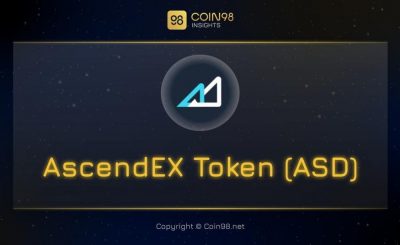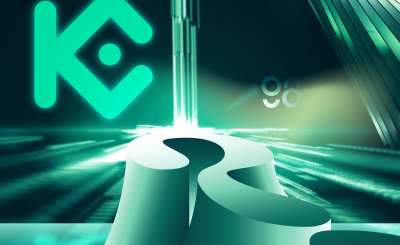Emerging around mid-2021, Play to Earn is a keyword used to refer to Gaming-oriented projects, helping users to entertain and earn income. But there is a project that also belongs to this trend, but is designed not in the direction of Gaming, but in Poker, which is Decentral Games. This article analyzes how Decentral Games works, as well as how the project develops Play to Earn.
Overview of Decentral Games
What is Decentral Games?
Decentral Games is a Play to Earn ecosystem built on Decentraland. Decentral Games builds games to keep users engaged Play to Earn. These games are held in amusement parks in Decentraland. These places are Stronghold, Dext Lounge, Chateau Satoshi, Osiris and Tominoya Casino.
The highlight of Decentral Games is to allow players to experience the games in the world Metaverse by Decentraland.
Information about entertainment zones of Decentral Games
Tominoya Casino previously allowed users to deposit and pay with Crypto, but due to legal issues, it is now open for free (no deposit required). Here, users can play Poker, Blackjack, Roulette, etc., but can’t make money.
In the remaining places, players must need NFT to participate in making profits. Specifically, bonuses are received based on rankings or doing quests. All four of these places are for ICE Poker.
The reason to open many zones? That’s because each place can only accommodate a fixed number of people. Therefore, as the number of players increased, it was necessary to open new areas.
Brief about ICE Poker
What is ICE Poker?
ICE Poker simulates the real-life Poker game, built by Decentral Games. ICE Poker revolves around three assets: ICE Wearables, Chips, ICE.
What is ICE Wearables?
This section will provide information about NFT Wearables:
- What are NFT Wearables?
- Ways to get NFT Wearables.
- How to Upgrade NFT Wearables |
While Chips are money cards as you usually see, and ICE is the Reward Token of ICE Poker, ICE wearables are NFTs that are required to participate in order to play ICE Poker.

The supply of NFT Wearables is controlled by Decentral Games thanks to the batch method. These NFTs cannot “spawn” another NFT like in other Play&Earn models. When there is no open sale, users have only two ways to participate in ICE Poker:
- Buy ICE Wearables on NFT Marketplace like Opensea.
- Authorized from the holder of ICE Wearables. The authorized people only need to provide the wallet address and the NFT holder will authorize through the Delegation system.
The authorization system is as follows (based on NFT level 1 – split ratio with high level NFT will be slightly different):

NFT Holders will check who has the ability to play well (earn a lot of ICE) for authorization. After that, the player will divide the reward for NFT Holders with the ratio shown above, along with 100% XP for NFT Holders.

What XP do NFT Holders receive? That is the experience point used to upgrade NFT Wearable. The higher the level, the more ICE rewards you get. To upgrade, users must burn XP + ICE + DG (administration token of Decentral Games). Below are the required fees and additional ICE based on NFT Wearables tier.

Activities in ICE Poker
First, you need to know that the number of Chips issued to each person/day is based on their existing NFT Wearables.
Chips are in-game items that are not exchangeable for real money. The amount of chips the player has at the end of the day determines the position on the leaderboard, based on which the game will give a corresponding reward multiplier. The more chips the player ends up with, the greater the chance of a player getting a bigger reward in ICE tokens.
Here are the corresponding NFT Wearables and Chips counts:

Here are the user activities with ICE Poker:

(first) Every day, players will be refreshed with Chips based on the aforementioned NFT Wearables. When they play, they will receive ICE and XP.
(2) Players can use ICE, XP, DG to upgrade NFT Wearables.
(3) They can buy NFT wearables at Marketplace with ETH and burn 500 DG (now converted to 2500 ICE) to activate NFT.
(4) Finally, it is possible to burn ICE through burning mechanisms (ICE Sinks) in the game and at the Marketplace to receive game related products and services.
How ICE Poker Brings Value to ICE
In essence, ICE does not have too many effects for players other than properly performing the “Earn” function in Play to Earn, or in other words, ICE is like Axie Infinity’s SLP, THC’s Thetan Arena…
Therefore, the way that ICE Poker brings value to ICE is by increasing deflation to maintain the price of ICE. ICE Poker is and will have the following activities to reduce the supply of ICE:
- Upgrade ICE Wearables.
- ICE Sins launched:
- Used as currency to buy decorations.
- Wearables activation fee.
- ICE Sins not yet launched:
- Native Marketplace (Q2) fees.
- NFTs participating in tournaments are sold for ICE.
- NFT additional items in the game.
- Advertising & Sponsorship Revenue in Metaverse Casino and In-Game
However, upgrading ICE Wearables is considered to reduce ICE circulation, but also indirectly increases Supply. Because NFT Wearables with higher level will give more ICE when completing the mission.
In addition, in NFT Wearables mints, in addition to the ETH mint amount that will go to the Treasury, the ICE used to mint will also be burned to remove it from the supply.
Operation model of Decentral Games
In general, Decentral Games is a collection of many entertainment areas with many games. Therefore, the way the project works is also easy to understand. Decentral Games divided into two periods with two different ways of operating.

Players buy tokens, participate in the entertainment area to play games such as Blackjack, Roulett, Poker, … Revenue will be put into the Treasury used to provide liquidity for the ICE – USDC pair to maintain the ICE price.
But after realizing law no longer supporting, Decentral Games used the Play to Earn model with NFT Wearables to “circumvent the law”. Instead of playing with tokens, players now use NFT Wearables as a ticket to play. And here is the current working model:

You can play all games for free (other games can be played for free after you can’t use tokens), of course, you will not get value when you win, or find a way to own NFT Wearables (buy, get authorization…) to join ICE Poker. After earning ICE, sell it for profit or participate in the activities I mentioned above.
With the use of NFT Wearables, players will take the title of free to play, no deposit to the game. This makes the project legal. But in exchange, Decentral Games now no longer generates direct revenue from player deposits. This reduces the project’s revenue.
The reason is because now they only need NFT Wearables, which can be minted, or bought in the market. This money only runs from player to player (trading), only a part goes to Treasury (mint).
Without a source of revenue to provide liquidity, Decentral Games is left to add many new deflation mechanisms to help keep the price of ICE (ICE Sinks coming in the future). Thereby attracting users to join Play to Earn.
Where does Decentral Games’ Treasury come from?
Decentral Games’ Treasury is sourced from:
- ICE Wearables Sale.
- ICE Wearables activation fee.
- Royalties on second sale of ICE Wearables (OpenSea or other Marketplaces if future support is available).
- Upgrade ICE Wearables.
- Fees from NFT Marketplace (to launch in Q2 2022).
- Provide DG and ICE token liquidity.
- Run the Polygon node.
- Works from Land in Decentraland.
The revenue as well as the decisions and directions of Decentral Games are made based on the governance of the community (DAO). Be it buyback and burn of ICE, or NFT Wearables on the market…

It can be seen that the accumulated value in the Treasury comes mostly from NFT launches and from early investment in Land in Decentraland. Most of the revenue coming from mints in wETH was accumulated into the Treasury and was used to provide liquidity, buy back DG…
At the moment, the NFT sales have been suspended, so except for the revenue shown in the picture, the project lacks revenue from the main product, ICE Poker. In addition, the Decentraland land property also promises a lot of mining potential in the future.
Speaking of revenue from ICE Poker, although royalty fees are very high, 4.9% per transaction in OpenSea (paid in wETH), and OpenSea’s own 2.5% fee (paid in wETH), the revenue mainly comes from from selling NFT Wearables through mints.

How Decentral Games Bring Value to DG
Despite being the main token of the project, DG doesn’t really get much value. The main use of DG is Stake to get xDG with admin rights, as well as receive interest paid in DG. This bonus DG has been allocated 2% of the total token.
Some other functions when having DG is using the Guild feature to manage when there are many NFT Wearables who want to authorize other players, or participate in Guild League tournaments, etc. In addition, to join mint NFT Wearables, he I need to keep at least 1,000 xDG.
In general, only the NFT Wearables mint feature is beneficial for DG, as well as proportional to the development of ICE Poker. As ICE Poker has more players, the demand for NFT Wearables will also increase, and more people will want to mint for cheap NFT Wearables, instead of buying in the secondary market.
Besides, upgrading NFT Wearables also costs 100 DG for each upgrade. This also helps to reduce the supply of DG in the market.

In addition, the project’s Treasury when there is an action to buy back tokens or NFT Wearables also more or less reduces the supply. But in fact, Buy Back Proposals for DG are supported, but buy back ICE and NFT are not.
The future of Decentral Games
Talking about the DG token, the role of DG is not really too important in the Decentral Game ecosystem. Therefore, it is very difficult for the price of DG to increase at the moment. So maybe in the future, the project will add new uses for this governance token, and somehow it will be tied to the cash flow in the Treasury.
It is easy to see that Decentral Games is a multi-game ecosystem, but almost all activities and revenue come from ICE Poker. So it can be said that ICE Poker develops, Decentral Games develops, and vice versa.
Often, an ecosystem that depends on only one factor often encounters many obstacles. The most common is not having anything else “backup” when the main factor fails. But with Decentral Games it is different.
Poker is a game that has been around for a long time but is still very popular in the real world. Therefore, unlike other Play to Earn games with fantasy themes, Decentral Games does not need to be improved or upgraded too much. What the project needs to focus on is how to balance the supply and demand of ICE to be successful.
In the future, Decentral Game will release a Progressive Web App (PWA) version of ICE Poker that can be played on phones or any browser platform, similar to the games we usually see.
According to Wikipedia, in 2014, Zynga Poker revenue accounted for 61% of the total revenue from the social poker game market, earning 9-13 million USD per month. Zynga Poker makes huge profits from players paying for in-game items and upgrades – while in-game rewards have no real money value.
Currently, ICE Poker’s DAU (daily active user) is around 10,000 daily players, while Zynga Poker has 4-6 million daily active users. What if the millions of people currently playing and paying to play Zynga Poker realized they could make money with their free time playing the game?
summary
Decentral Games initially had a fairly simple way of working: using real money to coordinate ICE prices, helping to balance the Play to Earn model. But after encountering hurdles from the law, the project has launched a number of mechanisms and future plans to reduce the supply of ICE.
Although DG is the main token, it seems that ICE has a lot to do with the success of the whole project. This goes against investing, where the primary token does not receive as much attention as the secondary token. Will there be big changes for DG in the future? Let’s wait and see.
Source: Decentral Games (DG) Operational Model Analysis – When Poker was brought into the Metaverse
– TechtipsnReview






